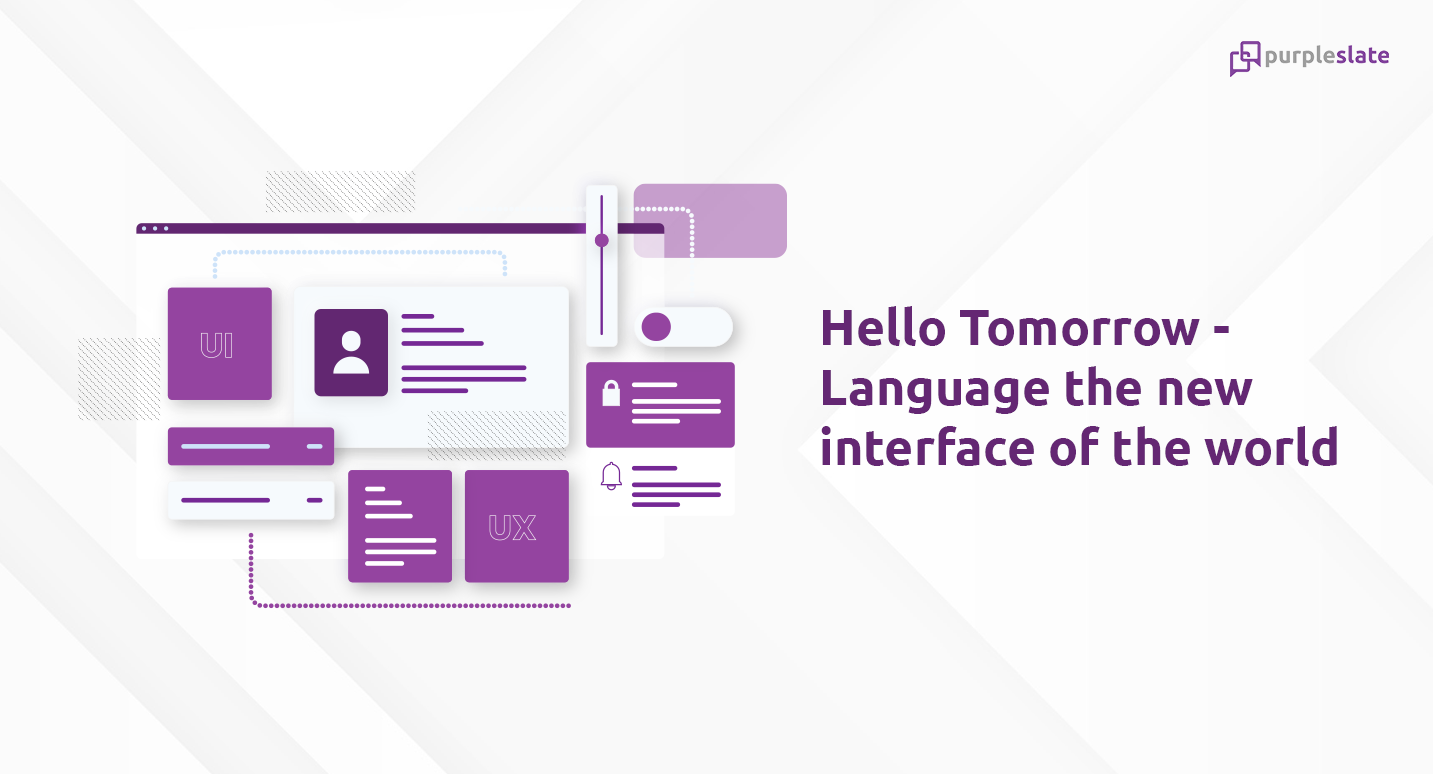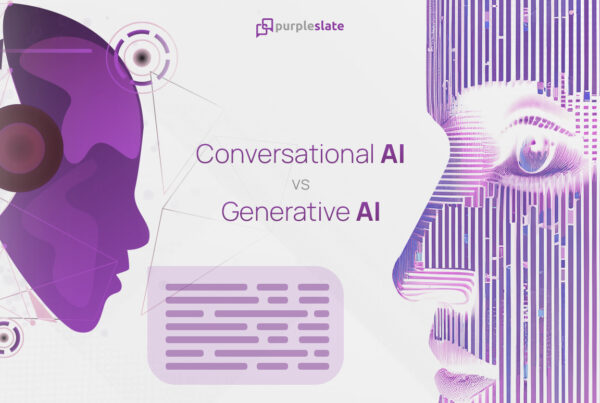
Introduction
Today, we are only beginning to see the potential of chatbots, virtual personal assistants, and other forms of conversational AI in changing our lives. Well, it seems as though language as an interface will be the future because of conversational AI. In fact, almost anyone can engage in conversation over text at any point in time. But it takes a deep design sense, and seamless interaction capabilities between humans and machines, to switch to language as an interface.
Language intersects through so many levels right from cultural nuances to communicating using voice and text. Who could forget the witty responses from Cortana when it was launched? Siri was ahead of its time during its introduction. Borrowing the words of Laura Kleiney, this was the first time people were able to experience an almost equivalent of HAL or the computer of Captain Kirk in action.
On a personal note, I think this introduction set up an expectation for you, readers. So, without further ado, let’s leap into the story!
Leapfrogging into the Future with Language
Forecasts suggests that by 2024, the number of digital voice assistants will reach 8.4 billion units – a number higher than the world’s population
Adopting digital voice assistants to automate most of the business, as well as personal chores, have been a trend that continues to rise. Especially with the advent of IoT and smart devices, this trend will penetrate deeper into the world of consumerism, and right at the center of voice assistants sit our hero – Conversational AI.
Any Conversational AI platform, be it your regular chatbot or an advanced out-of-world system is built around one premise – Context. If the technology is unable to understand and respond within the context of the conversation, the project has failed. So it’s imperative that the conversational AI system is adequately trained to understand the nuances of normal conversations, to make them seamless. And more importantly, to make it human.
Two things are now very clear.
- The Voice assistant usage trend will explode exponentially
- Context drives the engine of Conversational AI, the cornerstone of voice bots
This drives us to our most important question – What helps in setting the context? What is that one tool that drives conversations?
Language. It’s safe to presume that language is going to make machines intelligent and as the famous quote goes,
Machine Intelligence is the last invention humanity will ever need to make – Nick Bostrom
We believe that language – a simple tool used by our species since time immemorial will act as the bridge for a tech-driven, sustainable, and intelligent future.
Language Interfaces – Need, Advantages & Disadvantages
Exactly. Things are good as it is. Why does the world need language interfaces when graphical user interfaces are perfectly capable of executing tasks?
The answer is to strive for simplicity. Humans have always placed convenience at the root of all the activities they do with one question – If there’s a simpler way to get things done, why shouldn’t it be explored and used? This is where language interfaces come into play.
There has been a 360-degree shift in how people approach execution. This is a world that clicks less and talks more. People expect to interact with their system instead of pointing their mouse and clicking. That’s the inception of using language as an interface.
Natural language interfaces allow the user to interact using written or spoken ‘human’ commands instead of computer language. Words are used to execute functions such as creating, selecting, and modifying data.
Natural language interfaces can, however, be difficult to use effectively due to the unpredictable and ambiguous nature of human speech. Variation in tone and accent can lead to misinterpretation. Now let’s take a deeper look at the most common advantages and disadvantages of language interfaces.
Pros
- Ease of Use: The user need not have coding capabilities or advanced computer knowledge to execute tasks
- Better Adoption Rate: Since task execution has become easier, users are keener to try and adopt this into their daily routines
- Cost Effective: Debatable point, but if we consider the human capital required to create complex menus with dropdowns and multiple actions, language interfaces cost less
- Intuitive Responses: Language interfaces have their base in AI and machine learning. So the system learns to respond intuitively based on the context of the speaker
- Safer Alternative: In situations where the user is driving a car, language interfaces enable hands-free options thereby improving the overall safety of the user
Cons
- Ambiguity of Questions: The system needs rigorous training to understand the context and even then it can fail as human vocabulary and speech patterns are varied with different connotations and meaning
- Conversation Flow Control: It’s a human tendency to have follow-up questions. Users can easily pose questions or give commands that are beyond the ability of the system to interpret. This is in contrast to a menu-driven system, in which the system is always in control – as it constrains the user to select from a limited number of choices.
Natural Language Interface in Real Life
The term natural language interface always inspires the examples of, Siri, Alexa, Google Assistant, or Cortana which allows you to interact with your device’s operating system using your own spoken language.
But the applications are varied from just asking the system for a weather update or whether the traffic is too congested on your road to work. We examine four important use cases of language interfaces in real-life scenarios which leave a lasting impact on the world of business.
Fraud and anti-money laundering
Applying language interfaces to the narrative component of suspicious activity reports can assist with anti-money laundering compliance. Internal audit teams can also gain new insights into fraudulent activity.
Compliance
Compliance teams can automatically identify the most interesting and important information trapped in structured data with language interface systems. It helps them produce language that provides situational context, explanations, and potential next actions.
Forensics
With forensic investigations, natural language interfaces, combined with visual analytics, can reveal insights around anomalous information quickly, which helps target areas for further investigation.
Data Analytics
Language interfaces are also entering the world of data analytics replacing traditional self-serve GUI driven analytic tools and empowering different business teams with the ability to Talk to your Data®.
Looking to the Future
Natural language interfaces are slowly being integrated into the majority of applications, however, it might probably take some more time before the interfaces based on natural language will come into common use for good.
There is no doubt that along with the development of tools for creating bots, it will be easier for the world to create more complex and sophisticated interactions with users, in which the impression of talking with a computer algorithm will disappear along with the differentiation between humans and machines.
The future is not dystopian. It’s great with humans and machines coming together to create a better world.
But wait. It doesn’t end there. In the next article in this series, we will look a little bit deeper into the evolution of user interfaces along with some daily yet interesting use cases of voice AI.
If you’re thinking that text-driven interfaces can go out of fashion, this article might help answer the query.




